We bought a new side-by-side refrigerator in 1997. A number of years ago, the icemaker stopped making ice in a controlled manner, but we don’t use much ice, so it was easy to turn the icemaker on when we needed a bucket of ice, then turn it off until we used up that supply, then turn it back on. No big deal, and everything else worked fine. Everyone–friends, salesmen, and any type of serviceman who came to our house to fix anything over the years–told us to keep our old appliances as long as we could, because the new ones are expensive, and they don’t last very long. The servicemen often told us tales of things they fixed in the first two or three years of a new appliance’s life, and of appliances that needed to be replaced after only five years.
Time went on, and the icemaker began to cause problems. It dispensed undersized ice cubes, dropped non-stop ice cubes into a glass, and randomly allowed ice cubes to slip out of the chute and fall to the hardwood floor, where they melted if we didn’t hear them drop and pick them up immediately. It was becoming a major nuisance. Sure, we could have manually made ice cubes in trays, but the refrigerator was 28 years old, so we decided to put it to rest.
We liked our side-by-side refrigerator, and we like the water/ice dispenser on the outside of the unit, making it unnecessary to open either the freezer to scoop ice out of a tray, or the refrigerator to fill a glass with chilled water. Well, that style is fading away and is available in only a few models. Nearly all of the new models have French doors on top and a freezer drawer at the bottom with a large box for the icemaker to drop cubes into–thus using up freezer space and requiring the user to open the freezer to scoop ice into a glass. We settled on a Bosch refrigerator because (1) it’s a very good brand, and (2) they had two models with an icemaker/water dispenser on the outside of the door.
Here’s what we’ve enjoyed for 28 years.
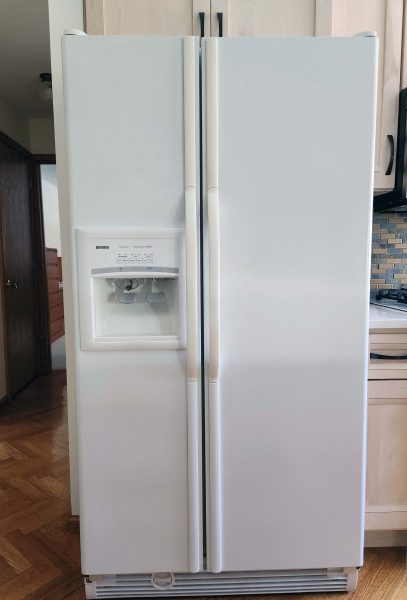
The installation guys surveyed our house for the best route in and out with a refrigerator and measured all the doorways and both refrigerators before deciding what Ted and I already knew–the exterior door in the kitchen is the best one to use for this. Unfortunately, the new refrigerator was wider than the doors would allow, so the guys had to remove the interior door and the storm door to bring in the new refrigerator.
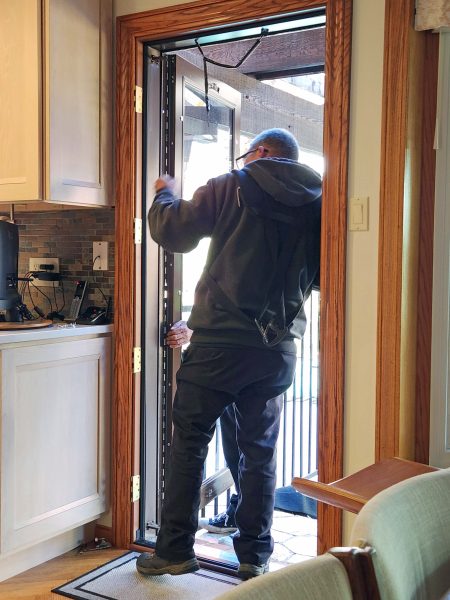
They took the doors off the old refrigerator, and there was no dolly in sight, so I thought they were going to slide it across the room to the doorway. I didn’t want the hardwood floor scratched, so I asked if they planned to put something under the old unit. “Oh, no,” the senior guy said, “we’ll just carry it to the truck.” “Yikes!” I thought. “They must be really strong!”
Well, each man had a harness that circled his waist with an over-the-shoulder strap that circled from one hip up and over the opposite shoulder, then back to the hip. In the photo below, you can see the long strap they slipped under the refrigerator and a little bit of the harness shoulder strap on the man’s left side. Each man hooked one end of the long strap to the harness at his waist. When they picked up the refrigerator, I could see how the belt was holding the weight and distributing it over their entire bodies, rather than taxing only their arms and shoulders. All they had to do was balance the refrigerator to keep it from tipping over.
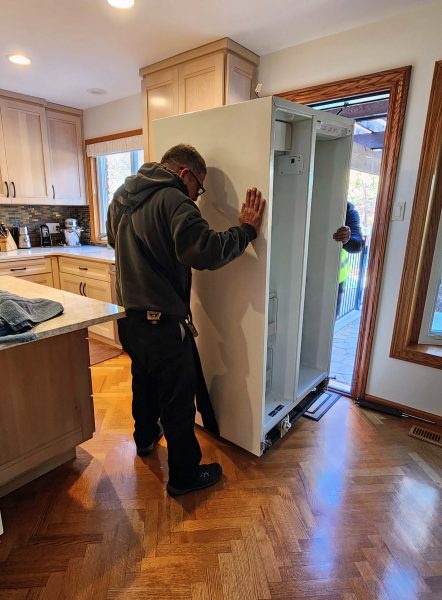
They carefully maneuvered the refrigerator through the doorway and parked it on the patio, leaving the belt to pick it up again later to carry the refrigerator to the truck. I think Ted and I could have carried a refrigerator with a belt and harness like that. It was a great system!
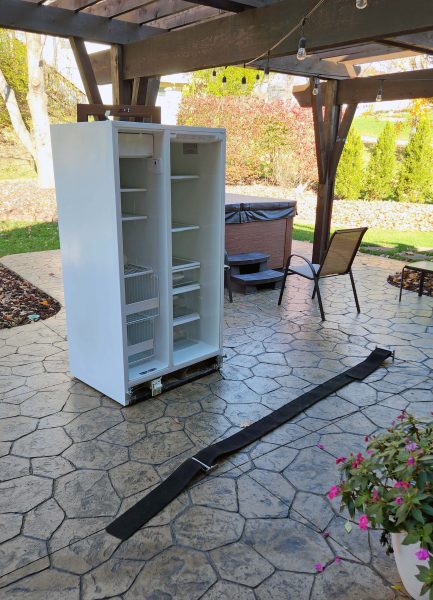
Here’s our new refrigerator. Neither of us was thrilled about the French doors and the freezer drawer, but as time goes on, we’re getting used to both and we like it. Best of all, we can get a drink of cold water and/or dispense ice without opening any doors and letting the cold air out.
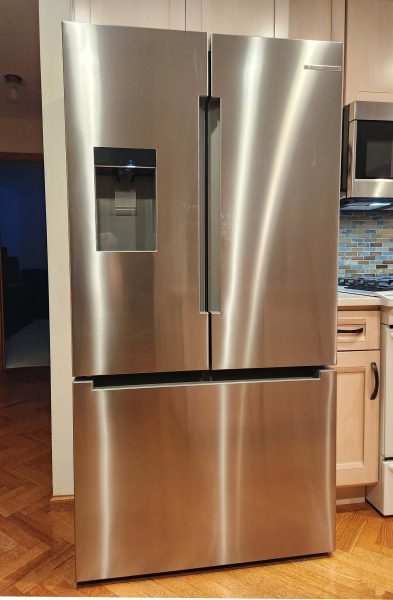
We’ve heeded the advice to keep our old appliances until they wear out. When we updated our kitchen in 2023, we kept our old refrigerator and stove, planning to replace them when they wore out. Well, the refrigerator is gone now, but the stove still lives. We bought it in or around 1993, making it over 30 years old. It still works perfectly and has never been repaired. When it dies, we’ll get a new one and then all of our kitchen appliances will be stainless steel instead of white. This will probably happen just in time for stainless steel appliances to go out of style. I’ve already seen brightly colored appliances in stores and I’m half-expecting poppy red, harvest gold, and avocado green appliances from the 1970s to return, because retro is “in.”
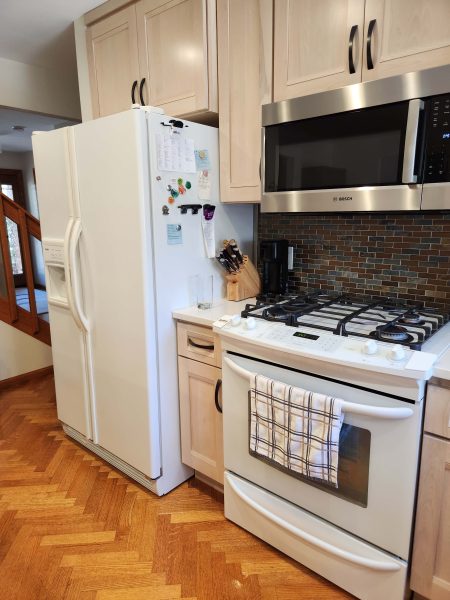
P.S. Our first washer and dryer lasted 22 years. Our current one is 30 years old and still working, with only minor repairs over the years (two thermostats for the dryer and a solenoid for the washer). They don’t make ’em like they used to!